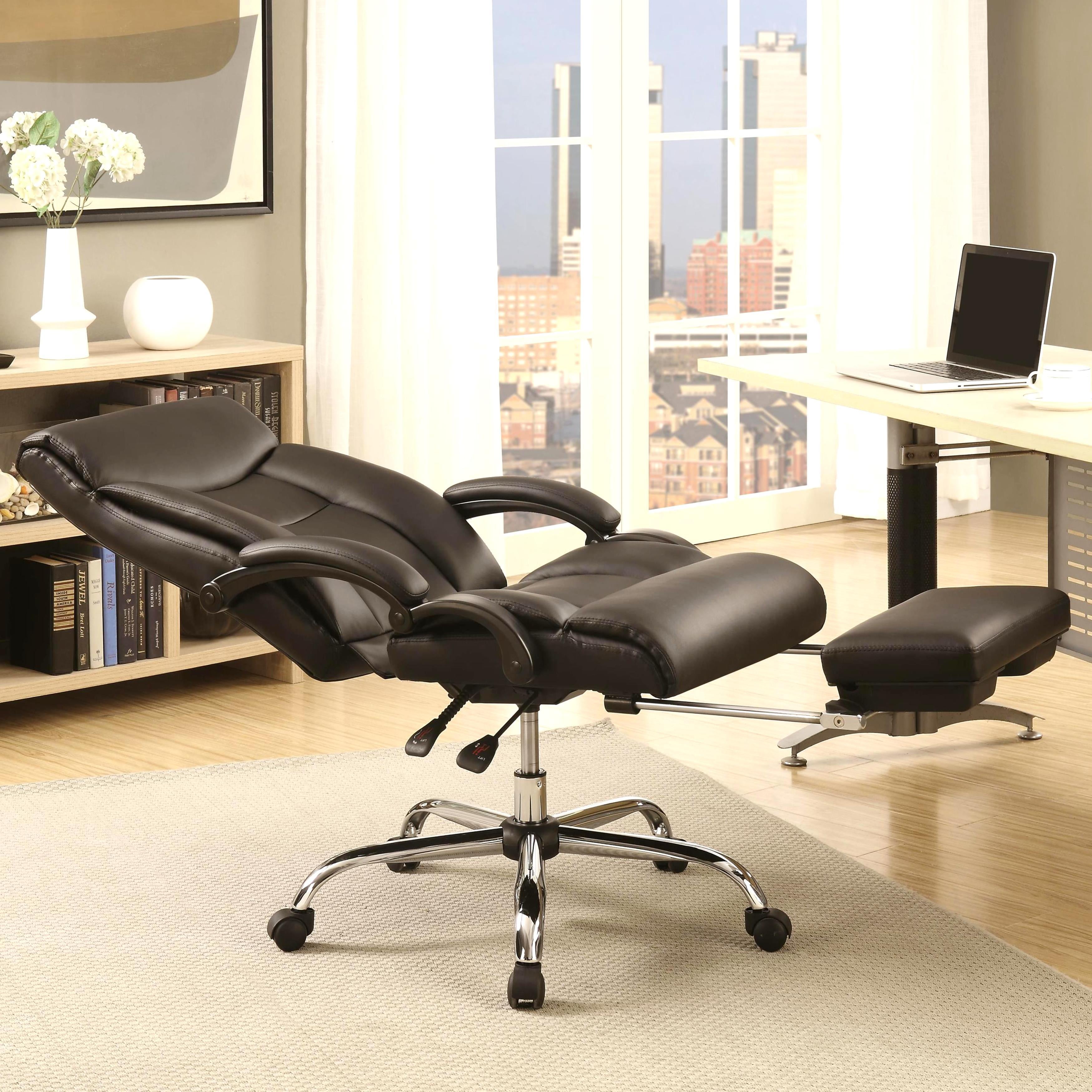Ergonomic Considerations of Reclining Desk Chairs: Reclining Desk Chair Station

The rise of remote work and the increasing awareness of workplace ergonomics have propelled the reclining desk chair into the spotlight. No longer a luxury item, these chairs are increasingly viewed as essential tools for maintaining comfort, productivity, and long-term spinal health during extended periods of sitting. Understanding the biomechanics involved and selecting a chair with appropriate ergonomic features is crucial for maximizing benefits and minimizing potential risks.
Biomechanics of Reclining Desk Chairs and Spinal Alignment
The biomechanics of using a reclining desk chair are centered around the interplay between posture, spinal alignment, and the chair’s support mechanisms. When properly adjusted, a reclining chair can help maintain the natural “S” curve of the spine, reducing strain on the lower back, neck, and shoulders. The reclining function allows for adjustments to the angle of the backrest, promoting a more relaxed posture and distributing weight more evenly across the seat and back. This can be particularly beneficial for individuals who spend many hours seated, mitigating the risk of developing musculoskeletal disorders. Poor posture, on the other hand, can lead to discomfort, reduced productivity, and long-term health problems such as back pain, neck pain, and carpal tunnel syndrome.
Impact of Reclining Angles on Comfort and Productivity
Different reclining angles affect both comfort and productivity. A slightly reclined position (around 100-110 degrees) can improve posture and reduce pressure on the spine. More reclined positions (120 degrees or more) can be beneficial for taking short breaks or relaxing during longer work sessions. However, excessive reclining can lead to slouching and reduced alertness. Finding the optimal angle is a personal matter, dependent on individual preferences and the specific tasks being performed. Experimentation and gradual adjustments are key to finding the most productive and comfortable angle. For example, a steeper angle might be preferable for focused work requiring concentration, while a more reclined angle might be suitable for brainstorming or less demanding tasks.
Ergonomic Features of Reclining Desk Chairs, Reclining desk chair station
Various reclining desk chair models offer a range of ergonomic features. Lumbar support is crucial, providing targeted support to the lower back and preventing slouching. Adjustable lumbar support allows for personalized customization. Armrests should be adjustable in height and width to support the forearms and reduce shoulder strain. The seat depth should be appropriate for the user’s leg length, ensuring proper thigh support without pressure on the back of the knees. Furthermore, features like breathable mesh fabric can improve comfort and prevent overheating, while headrests can provide additional support for the neck and head during more reclined positions. The quality of the materials and construction also impacts durability and overall ergonomic performance.
Checklist for Evaluating Ergonomic Suitability
Before purchasing a reclining desk chair, consider the following checklist:
- Lumbar Support: Is the lumbar support adjustable and supportive of your lower back’s natural curve?
- Armrests: Are the armrests adjustable in height and width, supporting your forearms comfortably?
- Seat Depth: Is the seat depth appropriate for your leg length, preventing pressure on the back of your knees?
- Recline Mechanism: Is the recline mechanism smooth, adjustable, and lockable in various positions?
- Material and Construction: Are the materials durable, breathable, and comfortable for extended use?
- Adjustability: Can the chair be easily adjusted to accommodate your individual height, weight, and posture?
- Overall Comfort: Does the chair feel comfortable during extended sitting periods?
Comparison of Reclining Desk Chairs
The following table compares four popular reclining desk chair models, highlighting their key ergonomic features and price points. Note that prices are approximate and can vary based on retailer and sales.
| Chair Model | Lumbar Support | Armrests | Price (USD) |
|---|---|---|---|
| Herman Miller Embody (Reclining Option) | Excellent, adjustable | Adjustable height and width | $1500 – $2000 |
| Steelcase Leap (Reclining Option) | Good, adjustable | Adjustable height and width | $1200 – $1800 |
| Secretlab Titan Evo 2022 (Reclining Option) | Good, adjustable | 4D adjustable | $500 – $800 |
| Hbada Reclining Office Chair | Fair, limited adjustability | Adjustable height | $150 – $300 |
